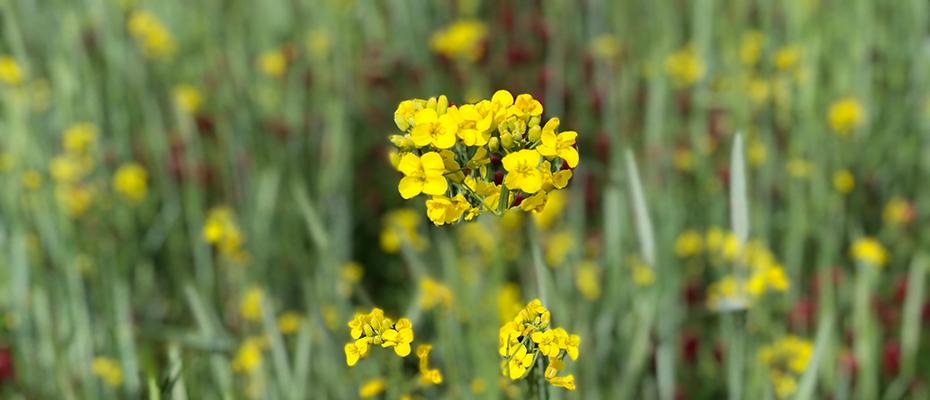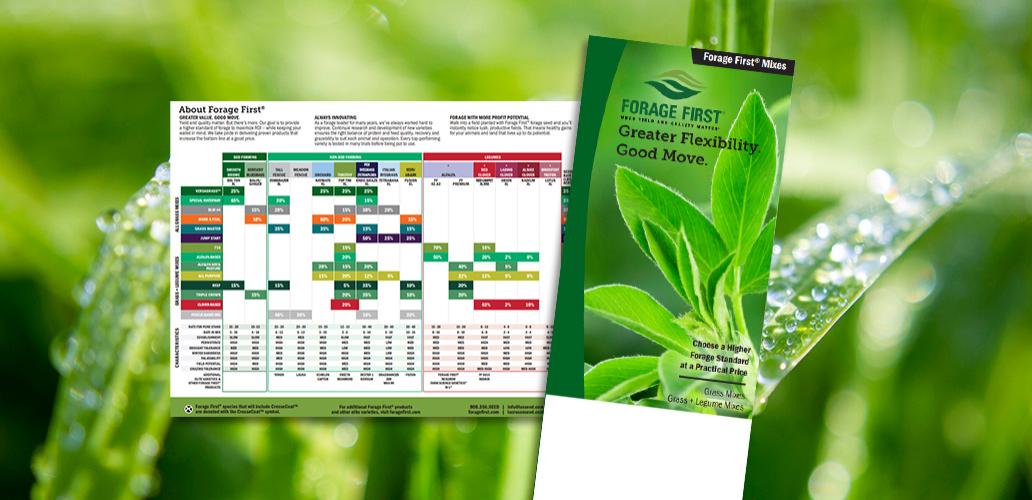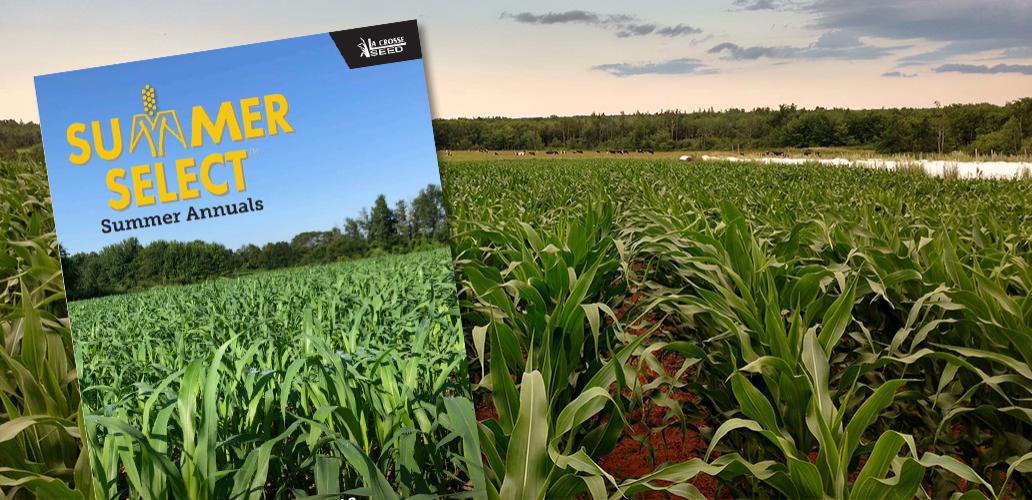Forage First Guide I Summer Select Guide
Greater Value. Good Move. Yield and quality matter. But there’s more. Our goal is to provide a higher standard for forage to maximize ROI– while keeping your wallet in mind. We take pride in delivering proven products that increase the bottom line at a good price.

A Rapeseed brassica cover crop is an upright, cool season and/or winter annual broadleaf. This brassica is versatile enough to be planted in the spring for a summer cover, or may be utilized in the fall for a winter cover crop. Rapeseed brassica works great as a dual-purpose crop, adapting to a wide range of soil types and conditions. Rapeseed tends to be extremely drought-tolerant and stands frost better than many brassicas. Because of its winter hardiness, it’s common for growers to get multiple grazing cycles when feeding rapeseed brassica.
CHARACTERISTICS:
Non-Forage Benefits:
1 = Poor; 5 = Excellent
Compaction Alleviation: 5
Weed Suppression: 3
Biomass Production: 4
Erosion Control: 4
Disease/Pest Control: 4
Pollinator/Beneficials: 4
P & K Cycling: 4
Ease of Establishment: 5
Nitrogen Fixer/Scavenger: Scavenger
Nutritional Value:
Values Vary Greatly Depending on Maturity
Crude Protein: 14
NEL¹ Mcal/lb.: TBD
ADF%²: 28
NDF%³: 41
TDN: 57
DM Tons/Acre: 1.5-4
Days to First Harvest: 60-80
Days to Next Harvest: –
¹- Net Energy for Lactation = Energy available after subtracting digestive and metabolic losses
²- Acid Detergent Fiber = Low values mean more digestible
³- Neutral Detergent Fiber = Low values mean cows can eat more
Ranking (Good, Better, Best):
Graze: Good
Baleage: Better
Chop: Best
SEEDING:
Planting Time:
Apr.-May; Aug.-Sept.
Seeding Rate:
Mono (lbs./acre): 4-6
Mix (lbs./acre): 2-4
Forage (lbs./acre): 6-8
Aerial (lbs./acre): 5-8
Seeding Info:
Carbon/Nitrogen Ratio (C:N): 20:1 – 22:1
Seeding Depth (in./with drill): 1/4-1/2
Seeds/lb.: 145,000
Bulk Density (lbs./ft.³): 45
Aerial Application Rate: 5-8
Germination Soil Temp.: 41 F
USDA Hardiness Zone: 5
Days to Emergence: 4-10
MANAGEMENT:
Considerations
-
- Rapeseed can be more difficult to control with glyphosate
- Prefers soils with a pH 5.8-8.0
- Rapeseed may attract some non-beneficial pests
Brassica Crops can cause animal health disorders if not grazed properly. Introduce grazing animals to brassica pastures slowly (usually over 3-5 days). With extremely high forage values, brassicas can cause problems if hungry animals are turned out into predominate brassica pastures. Even though traditional recommendations allow for 2/3, we actually recommend keeping brassicas to under 1/3 of the grazing animal’s diet- always supplement brassicas with dry hay or other grasses (higher in fiber).
Ratings
Scale 1-9, where 9 = best or most pronounced
Compaction Alleviation
Weed Suppression
Biomass Production
Erosion Control
Disease/Pest Control
Pollinator/Beneficials
P & K Cycling
Ease of Establishment
- Deep, fibrous root system, scavenging both nitrogen and soluble phosphorus
- Strong biomass production makes it great for fall and winter grazing
- Offers the most grazing cycles of brassica when planted in late summer/early fall

.png)
.png)


.png)










